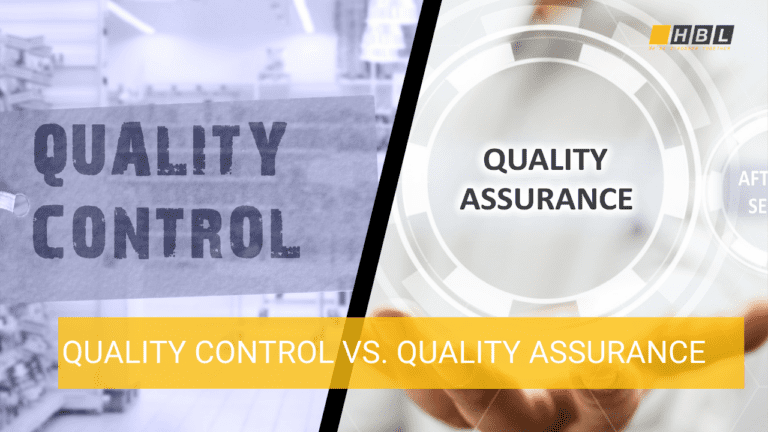As organizations worldwide struggle with unprecedented data volumes and competitive pressures, automatic data processing has emerged as the cornerstone of digital transformation, enabling companies to unlock efficiency, accuracy, and scalability like never before.
Did you know that 66% of businesses have already automated at least one business process, with projections indicating 85% adoption by 2029?
The global automated data processing market is projected to grow from $635.59 billion USD in 2025 to $1,414.98 billion USD by 2035, exhibiting an impressive 8.33% CAGR. For businesses across Australia, Asia-Pacific, and beyond, understanding and implementing automatic data processing solutions is no longer optional—it’s a competitive necessity that separates industry leaders from those left behind.
What is Automatic Data Processing?
Automatic data processing (ADP) refers to the use of computer systems and software to efficiently and accurately process, organize, and manage data with minimal human intervention. ADP systems are designed to automate and streamline data-related tasks, reducing the need for manual processes and minimizing the risk of costly errors.

The technology encompasses a wide range of activities related to handling data in digital formats, including:
- Data collection from various sources including POS transactions, IoT sensors, and batch reports
- Data validation and cleaning by identifying and correcting errors, missing values, and inconsistencies
- Data transformation into different formats suitable for analysis
- Data analysis and reporting for informed decision-making
- For organizations in automatic data processing Australia markets, the technology has become particularly relevant as the country’s data analytics market is projected to reach USD 7,544.7 million by 2030, growing at an exceptional 38% CAGR. This growth reflects Australian businesses’ commitment to leveraging automated solutions for competitive advantage.
How Automatic Data Processing Works
Understanding the framework behind automatic data processing is essential for successful implementation. The process typically follows a structured sequence that transforms raw data into actionable insights.
The Automatic Data Processing Sequence
Step 1: Data Collection and Ingestion
The automation cycle begins with data collection from diverse sources, including point-of-sale transactions, batch reports, spreadsheets, IoT smart sensors, time sheets, and invoices. Modern systems utilize optical character recognition (OCR) to digitize paper-based documents. AI algorithms can automatically discover relevant data, extract it, and import it into the processing platform with minimal human intervention.
Step 2: Data Validation and Cleaning
Once collected, automatic data processing systems perform rigorous validation and cleaning operations. AI and machine learning algorithms can automatically identify and rectify errors, missing values, and inconsistencies across large datasets. This standardized approach ensures data consistency across different projects and teams.
Step 3: Data Transformation and Integration
Intelligent data transformation uses AI to automatically convert data into desired formats and structures. The system maps and matches data from different sources, even when data is not uniformly structured, creating a unified view for analysis.
Step 4: Analysis and Reporting
The final stage involves processing the prepared data through analytics engines. Automatic data processing systems can generate insightful reports and visualizations automatically, making data more accessible to decision-makers. Real-time dashboards update continuously without requiring manual report generation.
Implementation Framework
Successful automatic data processing implementation follows a proven framework:
- Define objectives – Clearly articulate goals such as improving data quality, ensuring regulatory compliance, or enhancing data accessibility
- Design framework structure – Identify core components including data governance, architecture, quality management, and security
- Select appropriate tools – Choose technologies compatible with current capabilities and future needs
- Deploy and integrate – Implement technical solutions with proper governance structures
- Monitor and optimize – Continuously evaluate performance and make adjustments
Key Benefits of Automatic Data Processing
According to McKinsey, approximately 50% of work activities can be automated, and organizations implementing automatic data processing solutions report transformative results. A Zapier survey reveals that 90% of knowledge workers confirm automation has improved people’s lives in the workplace.

Enhanced Operational Efficiency
Automatic data processing dramatically boosts efficiency by automating repetitive tasks. Businesses achieve an average ROI of 240%, typically recouping investments within six to nine months after deployment. Companies can process thousands of transactions simultaneously—something manual methods cannot achieve.
| Benefit | Impact | Source |
| Average productivity increase | 40% | Upwork Research 2024 |
| ROI from automation | 240% average | Symtrax |
| Payback period | 6-9 months | Symtrax |
| Error reduction | Up to 90% | Nividous |
Cost Reduction
Organizations leveraging automatic data processing report significant cost savings across multiple areas:
- Reduced labor costs through automation of routine data handling tasks
- Lower overtime expenses by managing peak workloads without additional staff
- Decreased material waste through improved accuracy and consistency
- One manufacturing case study demonstrated 40% reduction in total operating costs through RPA implementation
Improved Data Accuracy
Automatic data processing eliminates the risk of human errors in data handling. Automated systems achieve near-perfect accuracy in tasks like data entry, calculations, and form processing. One healthcare organization achieved 90% improvement in coding accuracy and 85% faster processing turnaround through automation.
Breaking Down Data Silos
Data silos occur when information is isolated within different departments or systems. Automatic data processing helps break down these silos by providing centralized data storage, improved accessibility, enhanced collaboration, and real-time integration across the organization.
Enhanced Security and Compliance
Modern automatic data processing systems include robust security features such as advanced encryption, controlled access, detailed audit trails, and automated backup and recovery. By automating compliance processes, organizations can effectively manage regulatory risks while reducing the likelihood of non-compliance.
Expert automatic data processing solutions!
Challenges and Risks of Automatic Data Processing
While automatic data processing offers substantial benefits, organizations must navigate several challenges for successful implementation.
Integration Complexity
Integrating AI and machine learning models into existing data infrastructure can be complex. Data teams need to ensure compatibility and seamless integration with various data sources and platforms. Organizations must assess their current data infrastructure and identify potential compatibility issues before deployment.
Data Quality and Governance
The success of automatic data processing systems depends on the quality and accuracy of input data. Poor quality or incorrect information can lead to deficient or non-compliant outputs. Data professionals face the challenge of ensuring data integrity, consistency, and proper governance throughout the automation process.
Security and Privacy Concerns
As automation systems handle sensitive data, organizations must prioritize robust security measures to protect against data breaches and unauthorized access. Compliance with regulations like GDPR requires implementing transparency in AI algorithms and providing individuals with control over their information.
Change Management
Implementing automatic data processing requires significant organizational change. Employees may resist new technologies, requiring comprehensive training programs and clear communication about the benefits of automation. A successful rollout demands dedicated teams for implementation and ongoing management.
Continuous Learning Requirements
AI and machine learning models require continuous learning and updating to remain effective. Data professionals need to monitor model performance, adapt to changing data patterns, and manage model updates effectively. This ongoing maintenance represents a long-term commitment beyond initial implementation.
Automatic Data Processing Across Industries
Automatic data processing is making significant impact across sectors worldwide, including markets where automatic data processing limited Australia and automatic data processing ltd Australia services operate.
Finance and Banking
Banks rely heavily on automatic data processing to detect fraud. Machine learning models analyze transaction data in real-time, flagging anomalies based on customers’ historical patterns. This automation can save millions of dollars annually that would otherwise be lost to fraudulent activity. The global AI in Finance market is projected to reach $190.33 billion by 2030, growing at a 30.6% CAGR.
Healthcare
Hospitals and clinics use automatic data processing to streamline patient record management, treatment plan delivery, and bill processing. Healthcare automation has enabled organizations to reduce patient wait times by 35%, increase patients seen daily by 25%, and decrease billing errors by 50%.
Retail and E-commerce
The retail industry leverages automatic data processing for inventory management, sales tracking, and understanding customer behavior. E-commerce platforms use ADP to gather and analyze customer browsing behavior and purchase history, automatically generating personalized product recommendations. One retail automation case study demonstrated 30% reduction in inventory holding costs and 40% decrease in order processing time.
Manufacturing
Manufacturing organizations apply automatic data processing for quality control, predictive maintenance, and supply chain optimization. Automated systems monitor manufacturing processes, identifying defects in real-time and reducing production errors. Predictive analytics help manufacturers anticipate equipment failures and perform maintenance before breakdowns occur, reducing costly downtime.
Australia Market Focus
For businesses seeking automatic data processing Australia solutions, the local IT services market is expected to reach USD 32.26 billion in 2025 and grow at a 19.24% CAGR to reach USD 77.77 billion by 2030. The Australian data governance market is also experiencing significant growth, reaching USD 90 million in 2024 with projections of USD 334.90 million by 2033.
Get in touch with HBLAB’s expert team !
The Role of AI and Machine Learning in Automatic Data Processing
Artificial intelligence and machine learning are fundamentally reshaping automatic data processing capabilities. According to Gartner’s 2024 CIO Survey, over 65% of organizations plan to increase AI investments in data processes.

1. AI-Driven Enhancements
Predictive Analytics: AI can forecast trends and outcomes based on historical data, enabling proactive decision-making. Machine learning algorithms identify patterns in data that might be invisible to human analysts.
Natural Language Processing (NLP): NLP-based AI systems can interpret and extract relevant information from unstructured data sources such as text documents or emails, integrating this data with structured datasets for comprehensive analysis.
Anomaly Detection: AI-powered anomaly detection systems automatically identify and handle inconsistencies or outliers in data during integration, ensuring abnormal data points are appropriately addressed.
2. Hyperautomation
The concept of hyperautomation—combining AI, machine learning, and robotic process automation (RPA)—is becoming a priority for 90% of large enterprises, according to Gartner. This approach automates entire business processes rather than isolated tasks, creating unprecedented operational efficiency.
3. AI Productivity Impact
Research indicates that AI users report 66% average productivity improvements across business tasks. Programming tasks show 126% improvement, while customer service interactions increase efficiency by 35%. Workers using generative AI report saving approximately 5.4% of their weekly hours, translating to measurable productivity gains.
The integration of AI with automatic data processing enables businesses to analyze vast amounts of data in real-time without human intervention, allowing companies to focus on innovation rather than infrastructure management.
When to Implement Automatic Data Processing
Organizations should consider implementing automatic data processing solutions when facing specific operational challenges or strategic opportunities.
Ideal Scenarios for Implementation
Rapid Scaling Requirements: When businesses experience growth that outpaces manual processing capabilities, automation becomes essential. Automatic data processing systems can process thousands of transactions simultaneously without proportional increases in staffing.
High Error Rates in Manual Processes: Organizations experiencing significant errors in data entry, reconciliation, or reporting benefit immediately from automation. Automated systems achieve near-perfect accuracy while reducing the risk of costly mistakes.
Compliance Pressures: Industries with strict regulatory requirements (BFSI, healthcare, manufacturing) need automatic data processing to maintain consistent compliance, audit trails, and security protocols.
Cost Optimization Initiatives: When leadership prioritizes cost reduction, automation delivers compelling returns. Most businesses see returns within 3-6 months of implementation.
Digital Transformation Strategies: Organizations pursuing comprehensive digital transformation need automatic data processing as a foundational capability for data-driven decision-making.
Signs Your Organization Needs Automatic Data Processing
- Employees spend excessive time on repetitive data tasks
- Data quality issues affect business decisions
- Information silos prevent cross-departmental collaboration
- Reporting delays impact competitive responsiveness
- Manual processes cannot scale with business growth
HBLAB – Your Partner in Automatic Data Processing Solutions
In an era where data-driven decision-making determines competitive advantage, organizations need trusted partners who understand both technology and business objectives. HBLAB stands as a proven leader in delivering automatic data processing solutions that transform operations and accelerate growth.

Why Choose HBLAB?
– 630+ Highly Skilled Professionals: HBLAB’s growing team of engineers and project managers brings strong technical expertise and extensive experience developing exceptional technology solutions. Headquartered in Vietnam with branch offices across Australia, Singapore, Japan, and Korea, HBLAB serves clients across diverse industries including retail, e-commerce, education, and healthcare.
– English Proficiency for Global Collaboration: HBLAB’s professionals communicate effectively in English, ensuring seamless collaboration with international clients throughout project lifecycles.
– 30% Senior-Level Expertise: With 30% of employees having over 5 years of experience working on complex projects, HBLAB delivers the deep technical knowledge required for sophisticated automatic data processing implementations.
– CMMI Level 3 Certification: HBLAB’s commitment to process excellence is demonstrated through CMMI Level 3 certification, ensuring consistent, high-quality delivery across all engagements.
– Cost-Effective Solutions: Clients benefit from cost savings up to 30% lower than local rates without compromising on quality, making enterprise-grade automation accessible to organizations of all sizes.
– Flexible Engagement Models: Whether you need offshore, onsite, or dedicated team arrangements, HBLAB adapts to your operational requirements with BOT (Build-Operate-Transfer) and other flexible partnership structures.
– AI Expertise Since 2017: HBLAB has been at the forefront of AI-driven solutions, with established partnerships including VNU’s Institute for AI, positioning clients to leverage the latest innovations in automatic data processing.
From Startups to Enterprises
From fast-growing startups to large-scale enterprises, HBLAB has been a reliable extension of internal development teams—helping businesses scale faster, innovate smarter, and deliver better. Whether you’re exploring options or need help optimizing existing systems, HBLAB provides the expertise to build data processing foundations that support your business in 2025 and beyond.
👉 Ready to transform your data operations?
We’ll help you implement automatic data processing solutions tailored to your unique business needs.
Frequently Asked Questions
1. What is automatic data processing?
Automatic data processing is the use of computer systems and software to efficiently process, organize, and manage data with minimal human intervention. It encompasses data collection, validation, transformation, analysis, and reporting—all performed automatically to reduce errors and improve operational efficiency.
2. How does automatic data processing benefit businesses?
Businesses implementing automatic data processing typically achieve 240% average ROI within 6-9 months. Key benefits include enhanced productivity (up to 40% improvement), reduced human errors (up to 90% accuracy improvement), cost savings (up to 30-40% reduction in operating costs), and faster decision-making through real-time data access.
3. What industries use automatic data processing?
Automatic data processing is widely used across finance and banking (fraud detection, algorithmic trading), healthcare (patient records, claims processing), retail (inventory management, personalized marketing), manufacturing (quality control, predictive maintenance), and logistics (supply chain optimization).
4. What are the challenges of implementing automatic data processing?
Key challenges include integration complexity with existing systems, ensuring data quality and governance, maintaining security and privacy compliance, managing organizational change, and providing ongoing system maintenance and updates.
5. How is AI transforming automatic data processing?
AI enhances automatic data processing through predictive analytics, natural language processing for unstructured data, automated anomaly detection, and intelligent data transformation. 65% of organizations are increasing AI investments in data processes, with users reporting 66% average productivity improvements.
6. Is automatic data processing suitable for small businesses?
Yes, automatic data processing is increasingly accessible to SMEs. The SME segment is projected to register the fastest growth in automation adoption through 2030. Pay-as-you-go cloud models and flexible outsourcing partnerships enable smaller businesses to implement automation with minimal upfront investment.
7. What is the difference between automatic data processing and robotic process automation (RPA)?
While automatic data processing encompasses the broad use of technology to handle data throughout its lifecycle, RPA specifically refers to software robots that mimic human actions to complete rule-based tasks. Modern automatic data processing solutions often integrate RPA with AI and machine learning for comprehensive automation.
8. How long does it take to implement automatic data processing?
Implementation timelines vary based on scope and complexity. Basic RPA deployments can be completed within 10 days, while comprehensive enterprise solutions typically take 3-6 months. Most organizations begin seeing measurable ROI within 6-9 months of deployment.
9. What role does cloud computing play in automatic data processing?
Cloud solutions dominate the automatic data processing market, with 52.1% market share in 2024 and the strongest growth trajectory at 22.1% CAGR through 2030. Cloud-based automation offers rapid provisioning, continuous upgrades, elastic licensing, and accessibility without significant infrastructure investment.
10. How can I get started with automatic data processing for my business?
Begin by identifying repetitive, high-volume data tasks that consume significant employee time. Assess your current data infrastructure, define clear objectives, and partner with experienced providers like HBLAB who can guide implementation from consulting through long-term maintenance.
Automatic data processing represents a fundamental shift in how organizations manage information and drive competitive advantage. As markets in Australia and globally continue their digital transformation journeys, businesses that embrace automation today position themselves for sustained success tomorrow. With comprehensive solutions, proven expertise, and flexible engagement models, HBLAB is ready to be your trusted partner in implementing automatic data processing that delivers measurable results.
CONTACT US FOR A FREE CONSULTATION
Read More:
– Database Development Made Simple: A Friendly Guide for 2026
– Customer Database Platforms: The Comprehensive 2025 Guide to Unified Customer Data Management
– Unlock Business Growth with the Right Data Warehouse Solution – Here’s How




